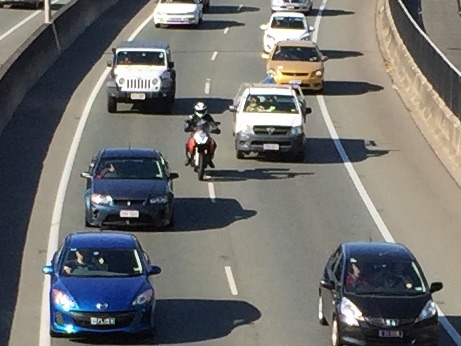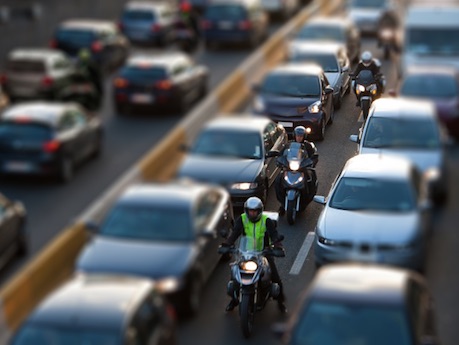Riders are being hit with hefty fines for not filtering correctly and one rider even believes it’s a police sting.
NSW, Queensland, ACT and, from September, Victoria all have lane filtering laws now and many states in the US are considering introducing them. It’s about time. Lane filtering will avoid riders being rear ended and allow all traffic to flow better.
Before these laws came in, people were being fined small amounts for failing to stay in their lane or passing on the left.
While it is a big leap forward to have lane filtering allowed, breaking the complex laws now means copping hefty fines of more than $300 and three demerit points.
Riders are strongly advised to check their local lane filtering laws as the laws differ in each jurisdiction.
For example, Queensland is the only state that allows the emergency lane or road verge to be used on highways posted at more than 90km/h.
However, one Brisbane rider has noted a ridiculous anomaly on the 100km/h Ipswich Motorway.
He says that lane filtering can only be done in peak hour when the traffic is crawling at less than 30km/h. However he says that is when the electronic signs are changed to 80km/h – a ridiculous move because no one can go that fast, anyway.
Queensland police confirm that it is illegal to lane filter when the electronic signs indicate a speed less than 90km/h.
What a totally ridiculous, counterproductive, catch-22 situation!
Another rider, Lee Sears, believes police have resorted to entrapment on a Pacific Motorway on-ramp by fining lane-filtering riders for speeding up to merge on to the highway. He was one of those fined $341 and three points, yet he believes he was doing his best to avoid an accident.
“They were positioned in a place of severe congestion where motorcyclists like myself had to speed up in order to access the slip road at a speed that’s higher than 30km/h,” he says.
“We have to otherwise we could cause an accident. And that’s when they catch us as we leave the hard shoulder.
“I was initially travelling at around 30km/h and because the congestion was so severe I wasn’t able to return to the immediate lane so I sped up to meet the speed of the slip road and that’s when they got me. Very unfair and dishonest.”
We’ve already pointed out that trying to filter through heavy traffic, monitoring for erratic driver behaviour, is difficult while also adhering to strict 30km/h maximum speeds. Riders can easily and accidentally speed in such situations and cop a hefty fine.
At least American states are introducing more realistic speeds, although they vary in different states.
Police respond by saying no one is forcing riders to lane filter.
That’s not good enough.
The lane-filtering laws need to be made uniform across all states, realistic speed limits applied and police enforcement needs to be discretionary and not counterproductive to the intention of the laws – that is, to improve peak-hour traffic flow.



